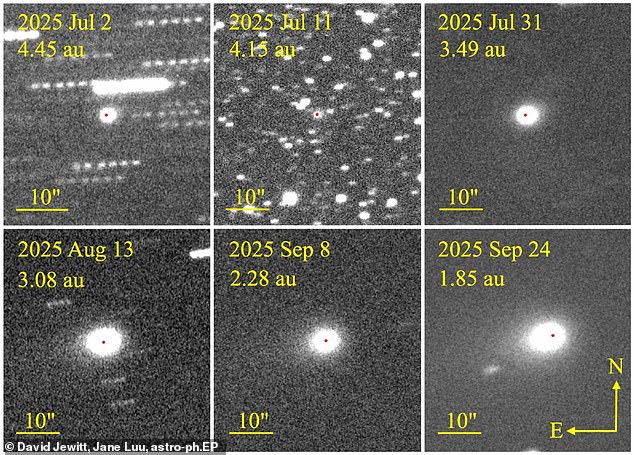Astronomers tracking the mysterious interstellar visitor 3I/ATLAS have revealed that the object has performed a dramatic tail reversal, now pointing away from the sun.
The change comes just months after Hubble Space Telescope images captured an unusual ‘anti-tail,’ a jet of particles streaming toward the sun instead of away from it.
New high-resolution observations from the Nordic Optical Telescope in the Canary Islands confirm that the anti-tail seen in July and August 2025 transformed into a classic tail by September.
The shift occurred because the comet’s dust and ice particles react differently to sunlight.
Early on, large, slow-moving dust grains scattered light sunward, creating the anti-tail. But as 3I/ATLAS moved closer to the Sun, rising temperatures ejected more ice fragments and longer-lived dust particles, producing the tail that now points away.
Ground-based observations will be impossible through October as the object passes behind the Sun, hidden from Earth’s view.
Researchers at the University of California and the University of Oslo found that 3I/ATLAS is shedding material at a rate proportional to the solar radiation striking its surface.
Meanwhile, NASA’s space telescopes previously detected the comet losing about 330 pounds of material per second, made up of 87 percent carbon dioxide and nine percent carbon monoxide.
This is a developing story… More updates to come

Harvard professor Avi Loeb shared the study in a Wednesday blog post, saying: ‘The total amount of mass lost from 3I/ATLAS during July through October 2025 amounts to about 2 million tons.
‘This amounts to a fraction lower than 0.00005 of the total mass of 3I/ATLAS. The interstellar object was inferred to possess a mass larger than 33 billion tons based on the lack of detectable non-gravitational recoil in its trajectory.’
